Dell Latitude 5290 2-in-1
Now that the tech sages have declared 2018 to be the year without another Surface Pro, Microsoft’s competitors are putting out new top-of-the-line 2-in-1s with the idea of making 2018 their year instead.
Enter the Dell Latitude 5290 2-in-1 (not to be confused with the Dell Latitude 5290 Business Laptop), an enterprise-oriented detachable device that the venerable Texas manufacturer hopes will capture some of that suddenly up for grabs 2-in-1 territory.
Dell’s website sells the Latitude 5290 2-in-1 we tested for £1,532 ($1,932), excluding VAT. Lower spec configurations start from £1,259 ($899).
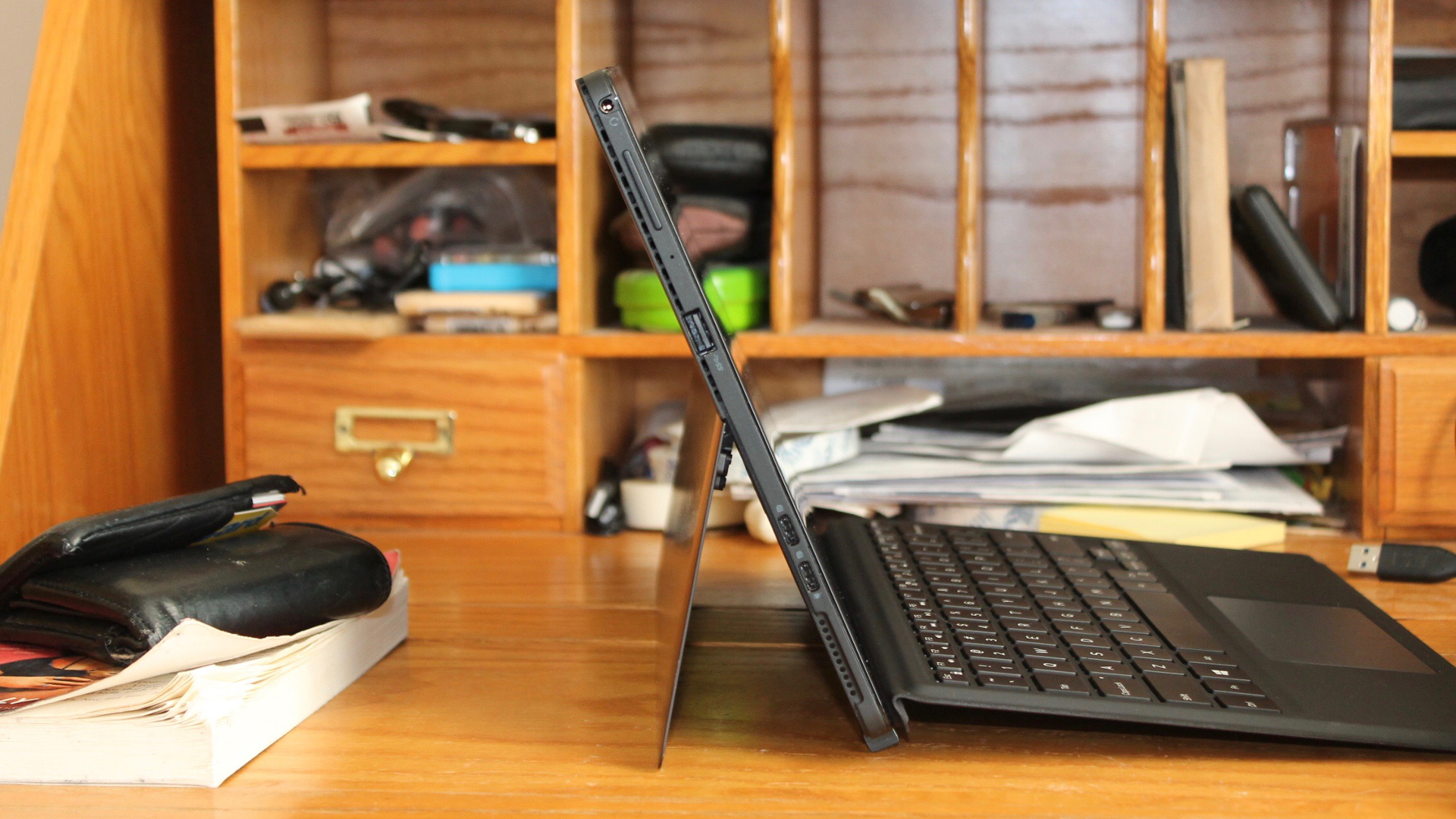
Design
The Latitude’s design follows the typical detachable 2-in-1 template: it has a deployable kickstand so the tablet portion can stand on its own, along with a magnetized type cover for easy tablet/laptop conversion, and an extra-large bezel and tactile rear panel so hands can easily grip it.

That said, the Latitude does bring some welcome wrinkles to the 2-in-1 blueprint. It has a nifty, intuitive take on the tablet kickstand – the leg auto deploys by holding the tablet at a 90 degree angle and pressing it into a flat surface.
Furthermore, the kickstand flexes a full 150 degrees, allowing for custom viewing angles and easy access to the micro-SIM and microSD card slots, which are cleverly, and discreetly, located around the back of the tablet.

The Latitude is also awash in enterprise-friendly ports and card slots. Most notably it boasts a Noble Wedge lock, smart card reader, NFC and – much kudos to Dell for this – a pair of DisplayPort over USB-C connectors. Thanks to this port twinning, users won’t have to choose between charging their Latitude and plugging in another device.

A magnet on the Latitude’s right-hand side secures the Dell Active Pen (sold separately for £60/$60) to the tablet, though we recommend tethering the stylus the old-fashioned way. The magnet simply isn’t strong enough to prevent the pen from being stripped off by an errant knock, especially if you transport the Latitude loose in a work bag.
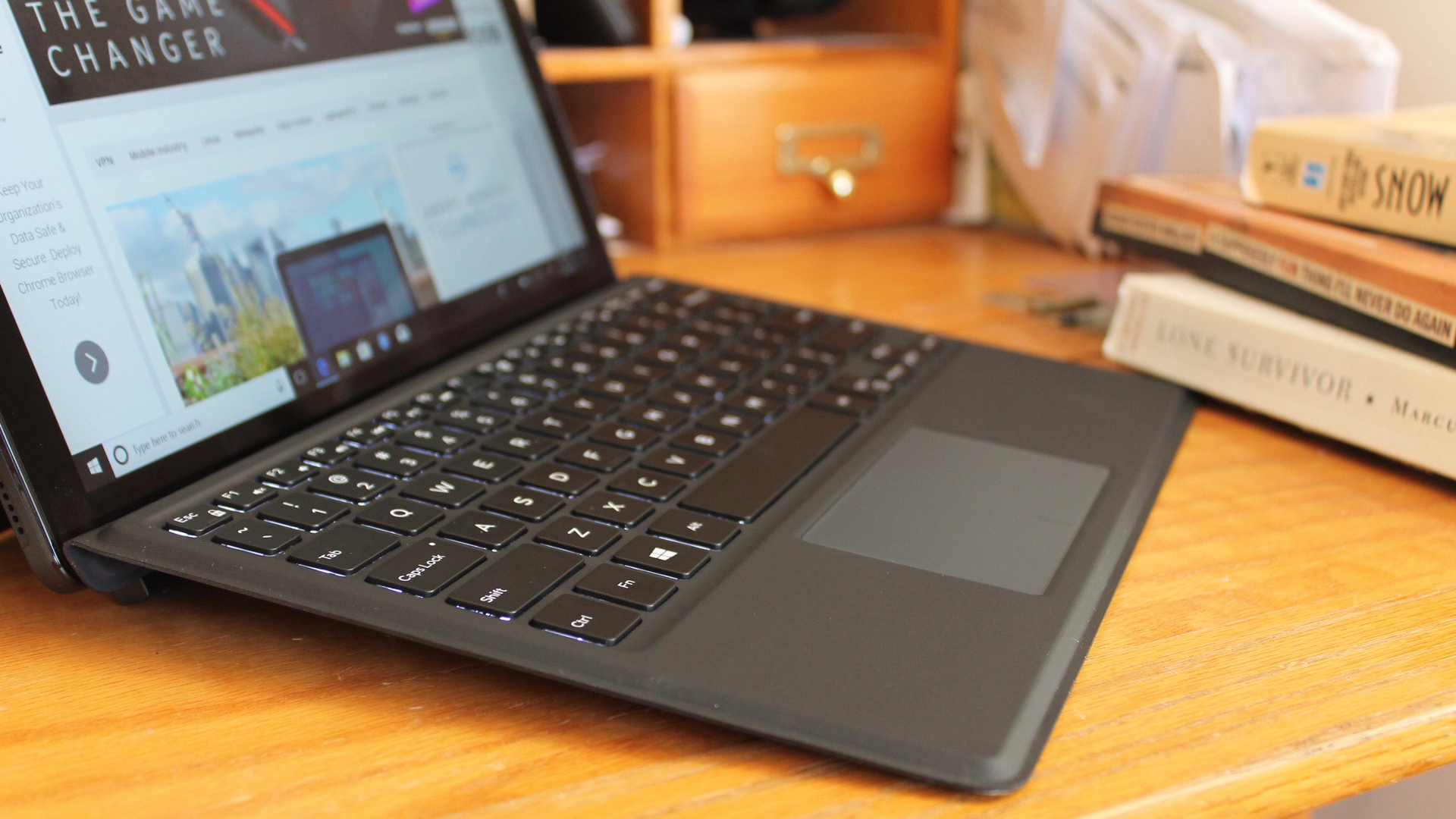
Unfortunately the Latitude also suffers from some of the same flaws inherent to all detachable devices.
Firstly, any non-flat surface gives it the fits. Laps, beds, and so forth – they’ll send your Latitude toppling unless it stays perfectly still. Detachable 2-in-1’s are just not balanced – or built with a firm enough base – for true ‘anywhere’ usage.
Secondly, the screen will be afflicted by smudge marks. Despite claims of anti-smudge technology, the Latitude’s glass attracts fingerprints – so be prepared to wipe down your device regularly.
Specifications
The Latitude’s claim to hardware fame is its 8th-generation Intel Core i5 processor, which helped it achieve excellent scores in our benchmark tests as you’ll see shortly. Less exciting is its 8GB of DDR3 memory – that’s only just enough RAM to keep the Latitude from hiccupping during heavy, multi-tab, multi-program usage.
Aside from its processor, the Latitude’s other hardware highlight is 256GB of PCIe NVMe storage. That’s a solid amount of capacity and it’s a quiet and fast drive.
There are three cameras – 5MP, 8MP, and infrared – giving users the ability to video call with the boss, snap pics of Mr. Yum Yums the tabby, and login via Windows Hello (though hopefully not all at the same time). Last but not least – and especially important for enterprise users – the Latitude boasts dual-band wireless-AC 8265 Wi-Fi and Bluetooth 4.2.
Usage and performance
With integrated graphics, the Latitude isn’t much of an esports choice, but it’s not trying to court the gamer crowd anyway. It’s a workhorse: the Latitude galloped through our benchmarks and – thanks to its PCIe NVME SSD – made an especially good showing on CrystalDiskMark and Atto’s drive performance tests.

The Latitude gets top marks for its vibrant display, too. The screen’s sharp contrast and great viewing angles are real eye-savers, especially during marathon work sessions. And while other devices deliver more pixels, that doesn’t necessarily make them more impressive: higher resolutions are wasted on a 12-inch screen.
However, there are a few areas where the Latitude fails to make the grade.
Its battery only lasted a paltry 2 hours 49 minutes. Even Dell is a little red-faced about this, as the company suggests investing in its Power Bank Plus to extend the Latitude’s longevity away from a power socket. Of course, that adds more to the price tag (£97/$150) of an already costly device.
The Latitude’s keyboard is not as dysfunctional as the battery, but its small keys and paddling-pool-shallow levels of travel make long typing sessions difficult, a no-no for such an enterprise-oriented device. The touchpad and touchscreen, on the other hand, feel intuitive and precise.
Competition
The Latitude’s obvious competitor is Microsoft’s Surface Pro. It has a display with more pixels, and definitely has more of a marketing budget than Dell’s new 2-in-1, but its older CPU (7th-gen) and limited selection of ports and card slots make it less appealing to business users.
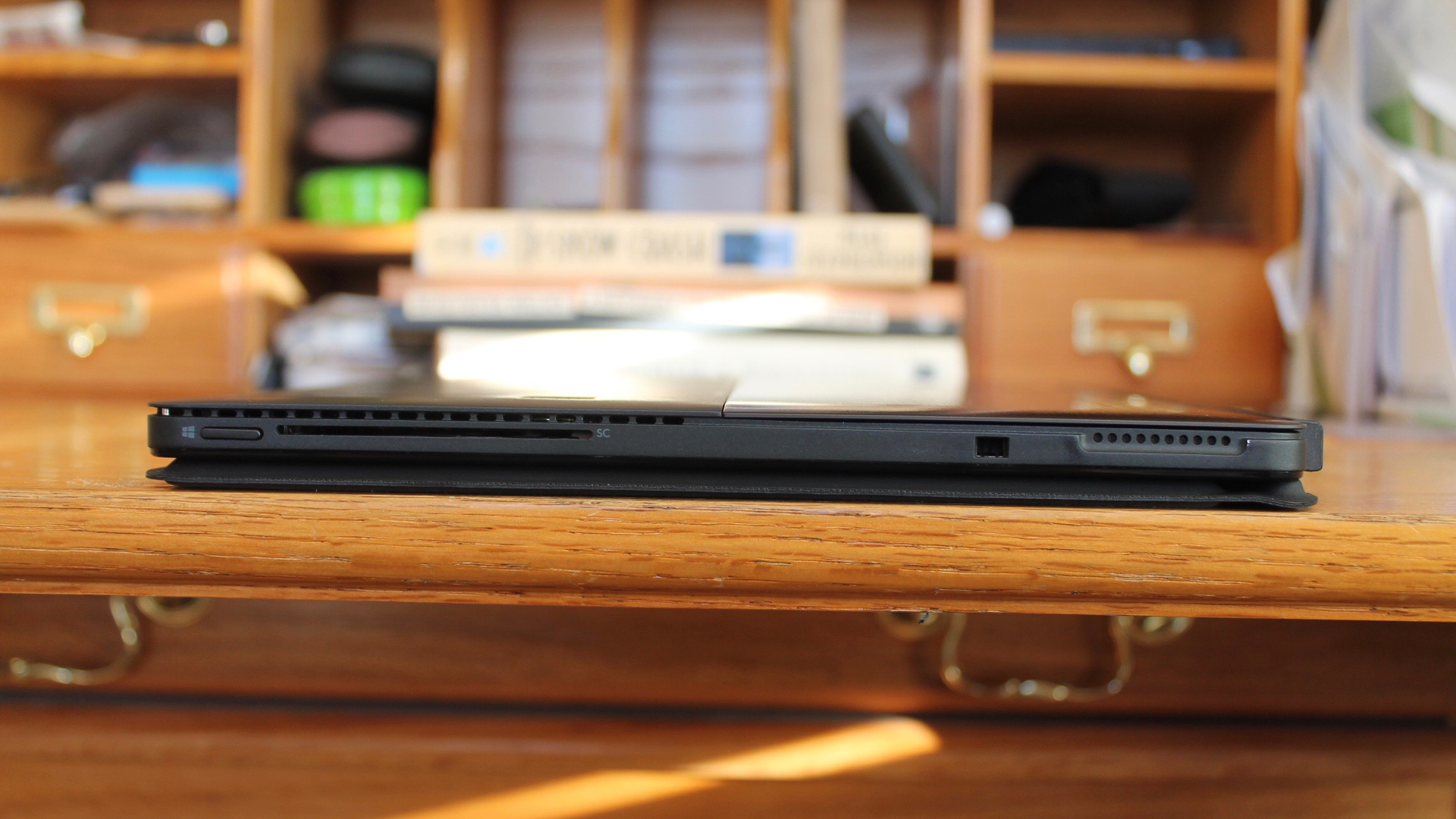
Microsoft’s detachable device is meant for the mass-market and its lower-end configurations are priced as such (it starts at £624/$799). However, note that buyers do have to purchase the Type Cover (£149/$130) separately.
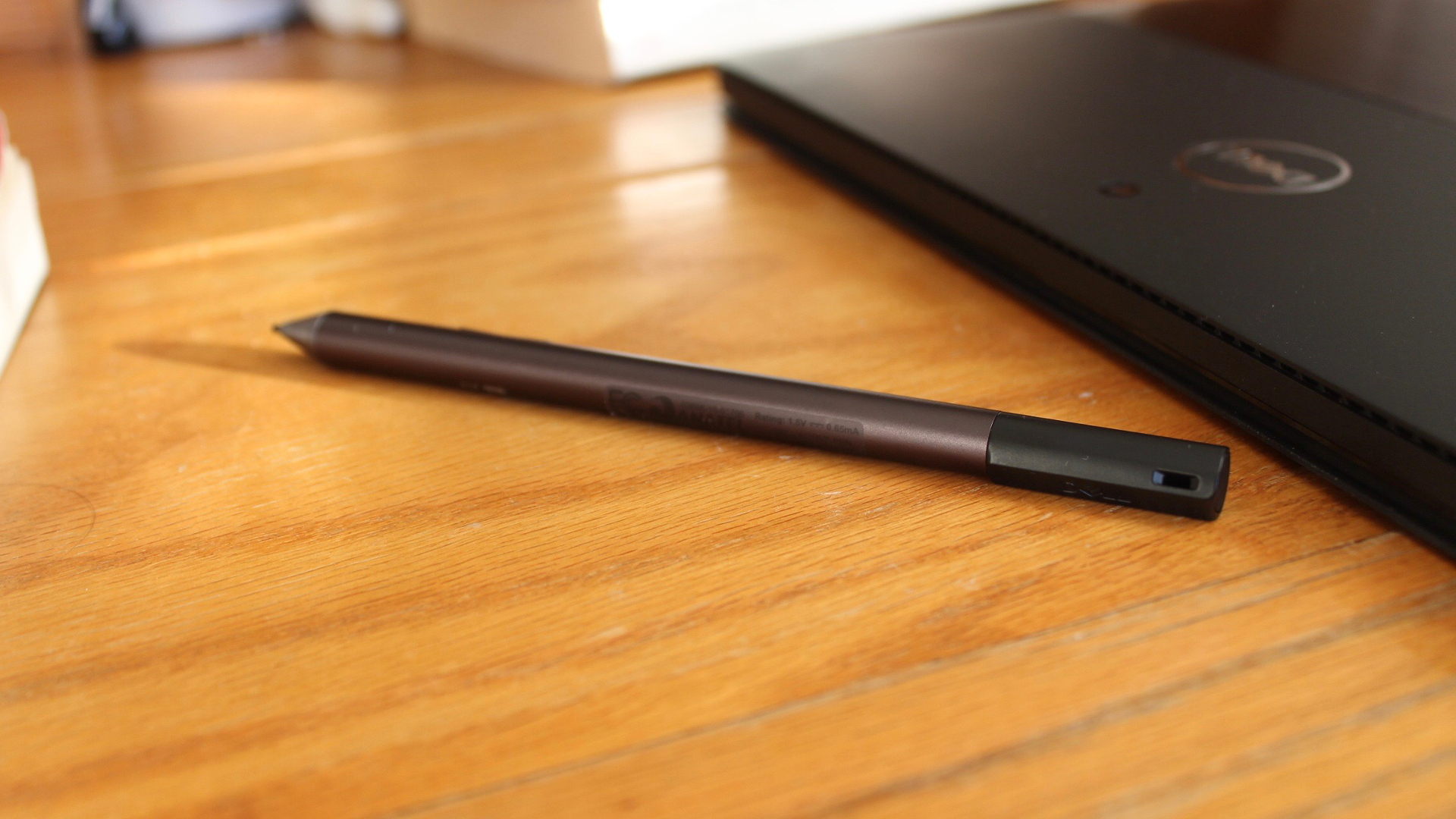
The Latitude’s closest competitor could be HP’s Elite x2 1012 G2. Also built for business, the Elite x2 has similar port and card reader offerings, as well as security features, and is a bit cheaper (£1,109/$1,439). The Elite x2, however, is missing the Latitude’s clever kickstand and 8th-generation Intel processor.
At £1,011 ($1,250) the Lenovo Miix 720 is another (relatively) cheap alternative to the Latitude, but it has last year’s hardware (7th-gen processor), a larger form factor, less options when it comes to ports and no fingerprint reader or micro-SIM card slot.
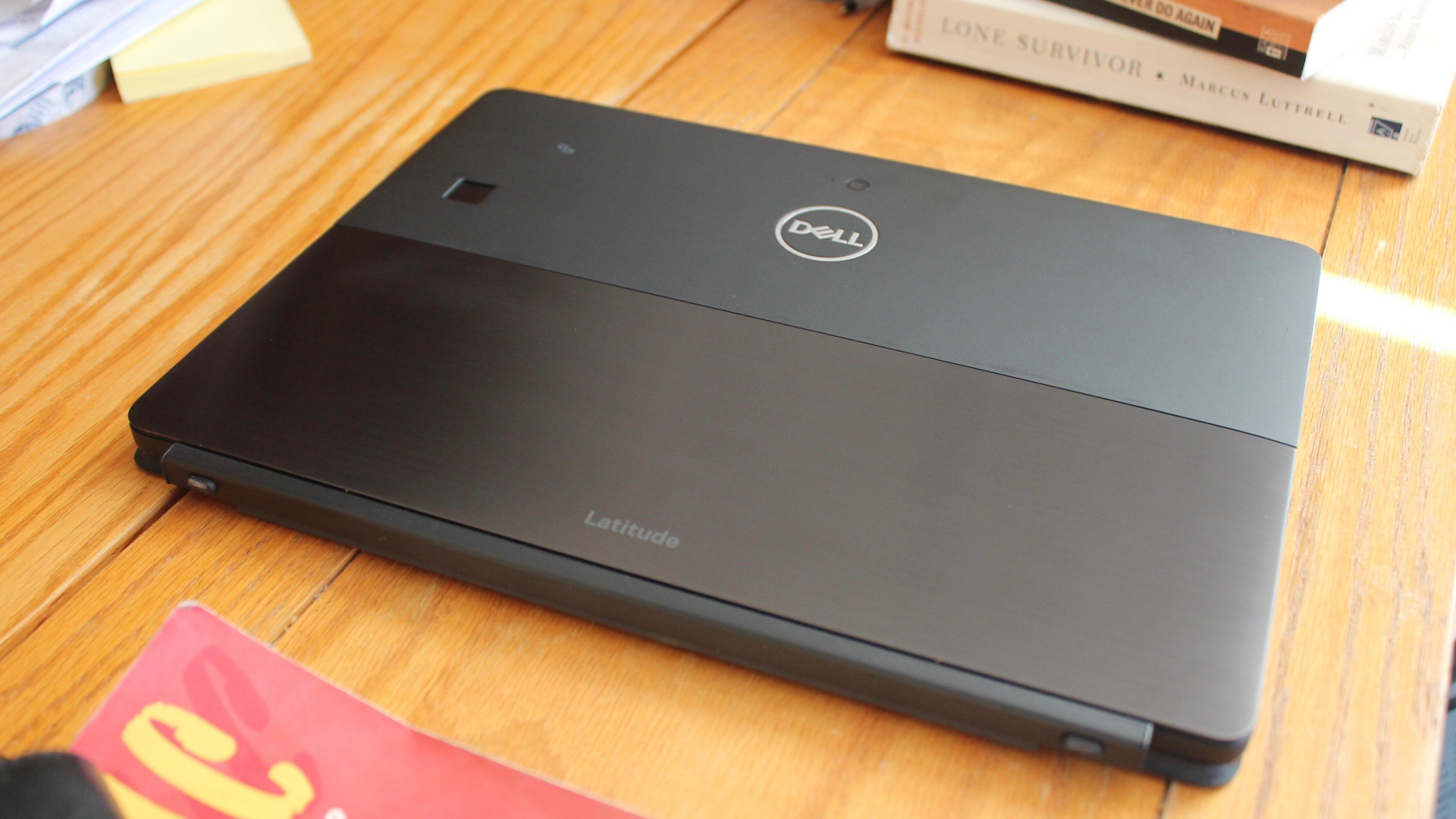
Our business take
The Latitude’s enterprise value proposition is its security features. The device is FIPS 140-2 and TCG certified, offers multiple biometric methods for logging in (facial and fingerprint recognition), plus it encrypts and sequesters data via Dell’s Data Protection and ControlVault.
Sales staff will find the Latitude 5290 particularly appealing: its detachability is perfect for intimate presentations, the brushed aluminum finish and auto deploy kickstand ooze a cool professionalism, and its security will keep private client information under wraps.

Final verdict
Even as detachable 2-in-1s go, the Latitude 5290 isn’t cheap. But Dell’s theory is that your boss will pick up the tab because of the great value the device brings to businesses. And in terms of performance and professionalism – a chintzy device it most certainly isn’t – the Latitude delivers.
But is it comfortable to use? The keyboard is shallow, and its coolest feature – the detachability of the tablet – makes it unwieldy to use on non-flat surfaces. On an overall level, the Latitude isn’t uncomfortable to use, but it could be more lap-friendly considering its cost.
Any business with a lot client-facing staff should consider the Latitude 5290 2-in-1. Even if it won’t replace the good old traditional laptop completely, Dell’s 2-in-1 is perfect for the travelling professional.
- We’ve picked out the best business laptops of 2018
0 comments:
Post a Comment